By Johna Till Johnson
Note: What follows gets a bit “kayak geeky”. I’ve tried to keep things straightforward and ensure the story appeals to non-paddlers as well. But just in case I didn’t entirely succeed, consider yourselves warned!
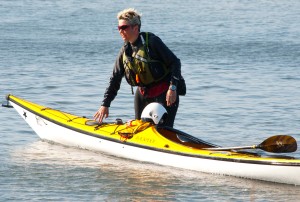 Sometimes it’s best not to know what you’re getting yourself into.
Sometimes it’s best not to know what you’re getting yourself into.
If I’d truly understood the nature of kayaking in the beginning, I doubt I’d ever have taken up the sport.
When I first started paddling, I assumed, like most people do, that the primary requirement was upper-body strength. And like most people, I was afraid of falling in. Not of actually being in the water (I’m a strong swimmer), but the falling-in part. Or more accurately, the loss of control and panic that hits when your boat tips over and begins to dump you into the drink.
So I figured the two main reasons for taking kayak lessons would be to build up my upper-body strength, and to learn how to keep the boat from ever tipping over.
Anyone who’s paddled for a while is already chuckling, because I couldn’t have been more wrong on those two points.
Upper-body strength is a help, for sure, but the better a paddler you are, the less you need it. Most of the effort should come from your core muscles, particularly stomach and back—which is why most seasoned paddlers have remarkably wimpy-looking arms (compared with their rather muscular middles).
And as for learning how not to fall in—unless you’re planning to do all your paddling in a bathtub, you’ll be falling in, or nearly falling in, quite a bit. That’s why you learn rolls, rescues, and recoveries—particularly the last.
You roll to bring yourself back out of the water once you’ve capsized. You rescue yourself and others once they’re in the water and out of the boat if they can’t roll, or the roll isn’t working for some reason. And you learn to recover from tipping over so that you don’t have to use the other two skills.
After almost five years of paddling, I’d developed a reasonable (if limited) repertoire of rolls and rescues. But I hadn’t ever gotten comfortable with recoveries—or more accurately, with anything involving almost falling in. There’s a whole series of maneuvers—including sculling, bracing, and most importantly, edging (putting the boat on one side)—that are designed to put paddlers in control in near-capsize situations.
And I wasn’t particularly good at any of them.
In fact, I’d failed the British Canoe Union (BCU) three-star exam in September ’11, in large part due to my inability to execute most of those maneuvers well. So one of the big reasons I wanted to attend the Sweetwater Symposium was that it offered three-star training. One of my paddling goals for 2012 is to pass the three-star exam, and I figured I’d get a head start on practice by taking a course early in the year. And maybe, if I started working early on my known weaknesses, I’d finally overcome them.
Moreover, Sweetwater is one of the oldest and best kayaking outfitters and training centers in Florida. Located in Clearwater and run by Russell Farrow, it’s the southeastern home of kayaking luminaries such as Nigel Foster (more on whom in a bit). Russell and his team are also singularly warm, friendly humans. I’ve been renting boats and taking lessons from Russell and his team for years, and I’ve always come away with expanded horizons and a renewed enthusiasm for paddling.
Plus, what’s not to love about the prospect of warm water and sunny skies in the middle of drysuit season?
But as usual, I’d failed to take into consideration the fact that February is a wickedly-busy month for me. Between work and personal travel, I’d been on the road every week since mid-January. I’d hit that point where you wake up in the morning and wonder for a second what city you’re in, and why you’re there.
By mid-February I was exhausted, behind on my workload, and seriously questioning my sanity when it came to making time for “frivolous” pursuits such as paddling.
So even though I’d blocked the time out on my calendar, I came this close to cancelling the trip altogether. But then I had that thought—familiar to adventurers everywhere, foolish and wise—“If not now, when?” And with a frantic last-minute rush of plane, hotel, and registration arrangements, Vlad and I landed in Florida on a Wednesday afternoon.
Thursday morning we arrived an hour early at the meet-up location listed on the Sweetwater web site, and confirmed by an earlier phone call: Weedon Island Preserve. Nobody was there—no surprise since we were so early—so we explored a little. Within a few minutes we’d seen pelicans, egrets, stingrays, and to our delighted amazement, a couple of dolphins frolicking in the water. It seemed a good omen.
A half-hour later, though, there were still no signs of paddling activity. We’d just begun wondering if we’d arrived at the wrong place when a car drove up with a couple of beautiful kayaks on top. A couple jumped out—both dressed in neoprene—and asked, “Are you here for the symposium?”
They were wiry bearded Peter and dark-haired gamine Gillian from Maryland, and they’d driven 16 hours over the previous two days to be there.
We chatted for a bit. Then, as it was getting close to the appointed hour, Peter called Sweetwater again. After some discussion, the Sweetwater folks decided it would be more logical to meet up at the shop, a 20-minute drive away.
We caravanned there, and quickly found ourselves engulfed in the familiar chaos of a kayaking conclave: friendly introductions, excited chatter about gear, and boats, boats, boats.
Russell’s team quickly outfitted Vlad with a plastic blue Looksha Sport, a stable boat that he’d requested for his goals of solo paddling and photography. For me, Russell suggested a Rockpool Alaw Bach—which I quickly found out was the precursor to the Tiderace Excite.
As soon as I got into the boat I loved it—as with my own Valley Avocet, it felt like pulling on a pair of comfortable (and flattering) jeans. It was yellow, just like my boat at home. And it had a jaunty little star painted on the bow (gotta love those Rockpool stars!). A fantastic boat: Another great omen.
A few minutes later I was introduced to my coach for the next two days: John Carmody, a lanky bearded “Mainiac” with piercing blue eyes. He looked a bit fierce, but was soft-spoken and gentle. I later found out that John was one of only a couple of US-based BCU Class 5 coaches. And a former veterinarian (though he doesn’t talk about that much!).
Less than an hour later I was out on the water at Johns Pass, Madeira Beach, with the rest of my class, which included Gillian, Edward (a Norwegian ninth-grader whose father, Stein, was in the US on military duty), and Lisa (whose long blonde hair was tied in three braids on each side). Rounding out the lineup was the assisting coach, another John, John Ozard, a biologist/ornithologist from Albany.
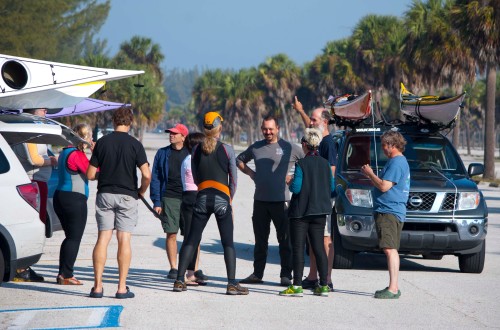
The class pre-launch: Coach John (pointing), Peter (long hair, back to camera), Gillian (just behind Peter), others (including yours truly).
A bit to my surprise, Coach John started us off gently: We paddled upriver into a protected inlet so he could check out our strokes.
First challenge: Slaloming around some pilings. We all diligently did our best and weaved through the pilings rather well, I thought. Edward amazed and amused us all with his impressive edging (leaning the boat over sideways).
After that exercise, John and John gathered us in a group, and Coach John asked: “So how do you edge?” We were somewhat surprised by the question. Each of us proffered a slightly different answer: Push one knee against the top of the cockpit; push hard against the foot-pedal on the other side; shift your weight onto one buttcheek.
Almost offhandedly, Coach John gently suggested that we consider not using our knees (makes your center of gravity too high), but instead push hard on the footpedal on the low side of the boat, shift weight onto the lower buttcheek (again, keeping your center of gravity low), and above all, look in the direction we wanted to turn.
We all practiced, and the difference was amazing. Simply by applying John’s “suggestions” (I didn’t realize then that this was his coaching technique), our turns were tighter, sharper, and more controlled. Honestly, if I forget everything else I’ve learned from the Symposium, the ability to execute a simple sweep-stroke-and-edge turn tightly and efficiently was worth the effort of getting there.
But that was just the start.
After a bit, John suggested that we paddle in a straight line, then rotate to the left (or right) and drop the rear paddle blade into the water. If that sounds confusing, it was: I remember Gillian asking, “So what do you want us to do?” He explained again: the idea was to have the back paddle blade in the water while we moved forward, stabilizing it with the back hand.
We did this several times, practicing with the feel of the blade, until we realized: He was having us do a stern rudder, essentially asking the paddle blade to act as a skeg in the water. But we figured out what it did—and more importantly, how it felt—before we remembered what it was called.
This was an epiphany for me.
If John had said, “Now we’re going to practice the stern rudder,” I would have immediately stressed out, trying (and failing) to imagine the stroke in my head and getting all tangled up in process. (To understand why, keep reading).
But by following his instructions, maintaining our form, and focusing on how it felt and what the boat did, the stroke was easy and intuitive.
And form was key. Not form for form’s sake (looking pretty) but to gain the greatest mechanical advantage out of each maneuver. Amazingly, I’d forgotten some of the basics of proper form: keeping my knuckles aligned with the top of the blade, wrists straight, and (for many strokes) a 90-degree bend at the elbow. If you do all that, you find yourself rotating your torso naturally—working your core, as I mentioned above, and not your arms. (It helps if you remember to look in the direction you want to rotate, also.)
That’s how it was both days that I worked with John. We reviewed a whole series of “basic” strokes (draw, sculling draw, bow rudder, mid-rudder) with an emphasis on form, technique, and most of all, how the stroke felt. We played a lot with the concept of a “neutral” blade, one that’s straight in the water, and doesn’t turn you left or right. This would come in very handy for the last course, “Fun with (Nigel) Foster”—see the upcoming “Part Two” of this blog post.
The second day, we worked on rescues. We all practiced the “new” BCU two-person rescue. The old way, you’d swim to the side of your boat at right angles and clamber in (it’s an undignified and awkward maneuver, but it works). We’d all done rescues that way on the three-star exam the year before, and though half of us passed, the coach admonished us for using “old-school” rescues.
In the “new” BCU rescues, you float parallel to the side of your boat and roll in, by throwing your outside leg into the cockpit (see photos). We were all dubious at first, but by the end we agreed this was a faster, easier, and more effective rescue. Score one for the BCU!
I learned an enormous amount in those two days—although we never really got around to the sculling and bracing that I’d hoped to practice. (That came later.)
But I learned how to feel the position of the boat, and the blade, and my body.
That doesn’t sound like much, but feeling the position of my body has always been a problem for me—to put it mildly.
The technical phrase for it is “kinesthetic sense”, and it’s an innate ability that some people—all world-class dancers and gymnasts, for example—have and many others don’t.
I don’t, and never have.
One of the defining stories of my childhood was when I was about eight. As a favor to my father, who was (among other things) the naval officer representing the gymnastics team at the U. S. Naval Academy, the head coach had a look at my abilities.
The gymnastics coach’s verdict? “She doesn’t have it.”
By “it” he meant that built-in ability to know where your body is, and what it’s doing, at every moment in time: Kinesthetic sense. Not only would I never be a world-class gymnast or dancer, I’d probably never make it to basic competence. It’s like a tone-deaf person trying to sing—a bad idea.
That didn’t seem to be a real problem when I took up kayaking, at least not at first, since I (erroneously) figured that all I needed was better upper-body strength and the ability not to tip over. But over the years I’d gotten a sneaking suspicion that there was more to paddling than that—and it turns out I was right.
Kinesthetic sense is a critical ability in paddling.
Something John said on the last day of his coaching really resonated with me. He remarked that his best student ever was a woman who had been a prima ballerina with the NYC ballet. By the end of a day, she’d mastered most of the maneuvers, and more. “I learned more from her than she learned from me,” John said.
If I’d known I’d needed kinesthetic sense to paddle well, I’d have chosen some other sport.
And that would have been a shame. Because I’d never have discovered that it’s possible to acquire kinesthetic sense. And learning how to overcome my limitations is a lesson that’s way more powerful—and significant—than learning to edge or stern rudder.
Sometimes it’s best not to know what you’re getting into.
______________________________________________________
Update March 27, 2012: Continue to Part Two —>

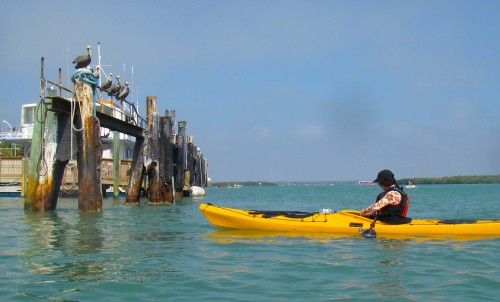
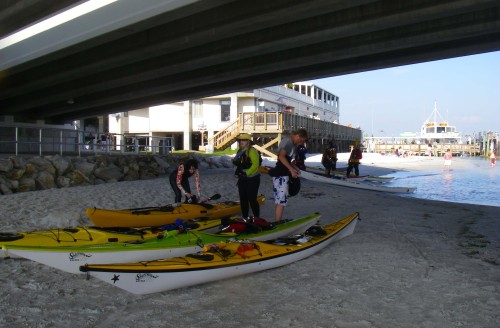
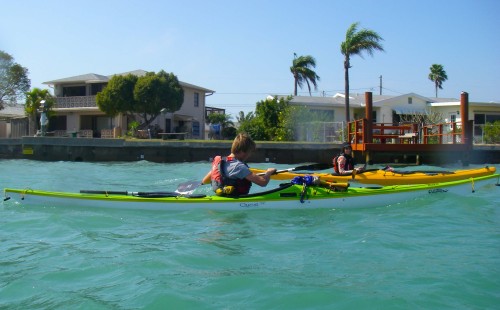

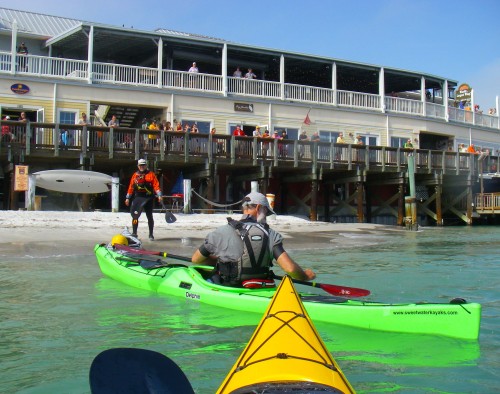

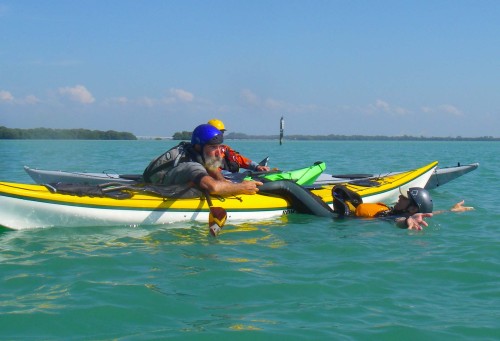
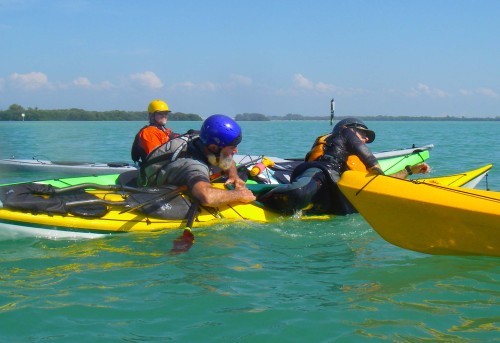

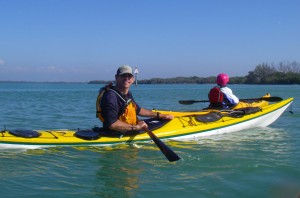




wonderful story, thanks MJ
LikeLike
Thanks MJ! It was a wonderful experience!
LikeLike
Proud, Oh so Proud!
LikeLike
Taino:
I WILL get there, I promise!! And for what it’s worth, everybody who took the 3* down here FAILED—it’s a tough exam and I look forward to not passing, but ACING it (if I can’t do that, I don’t want to pass).
LikeLike
Johna, well done! I believe you’ve added some new tools to your toolkit, or certainly modified some of your existing tools, from your experiences at Sweetwater. Practice, practice, practice, then go for that 3 star!
~ another John
LikeLike
John, thanks so much!
I really think I’m starting to “get” it. The funniest part is when I’m sitting on a plane heading somewhere–and start practicing a stern rudder to get the body motions right. My seatmate usually thinks that’s pretty weird. And unfortunately (or maybe fortunately) it doesn’t move the plane :-)
LikeLike
And also, updated you on the blog post! :-)
LikeLike
Thanks for sharing info about the new BCU 2-person rescue, Johna! I hadn’t seen that before. And it was really helpful to have pics too. I totally agree that Sweetwater’s runs a great symposium. I’ve been down for several in the past and always had an amazing time. Loved your previous posts too!
LikeLike
Hi Su: Hurray for “kayak geekiness”–I’m glad you appreciated the photos.
Gillian and I were both DEEPLY skeptical of this rescue. We were pretty much like, “Yeah, that’s not gonna work….”
But we tried and loved it. Don’t see why I’d go back to the previous one, unless I’m rescuing a total newbie who can’t comprehend the desired motion (it’s a little complicated to explain if you haven’t seen it done).
Hope to see you at an upcoming Sweetwater Symposium! And thanks for the kind words about previous posts, too.
LikeLike
Pingback: Putting the “Fun” Back Into Fundamentals: Sweetwater Kayak Symposium 2012, Part Two | Wind Against Current
Pingback: Seals and Swells on Sunday | Wind Against Current
Pingback: Where the Wild Rocks Are: Rock Gardening in Rhode Island | Wind Against Current
Pingback: Florida Birds Go Fishing | Wind Against Current
Pingback: All Roads Lead Home | Wind Against Current